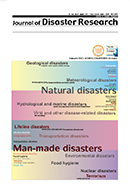Volume 10, Issue 6
Displaying 1-12 of 12 articles from this issue
- |<
- <
- 1
- >
- >|
Mini Special Issue on Space Microbiology: Microbial Monitoring in the International Space Station - “Kibo”
-
Article type: Review
2015Volume 10Issue 6 Pages 1022-1024
Published: December 01, 2015
Released on J-STAGE: July 01, 2019
Download PDF (138K) -
Article type: Review
2015Volume 10Issue 6 Pages 1025-1030
Published: December 01, 2015
Released on J-STAGE: July 01, 2019
Download PDF (4680K) -
Article type: Review
2015Volume 10Issue 6 Pages 1031-1034
Published: December 01, 2015
Released on J-STAGE: July 01, 2019
Download PDF (260K) -
Article type: Review
2015Volume 10Issue 6 Pages 1035-1039
Published: December 01, 2015
Released on J-STAGE: July 01, 2019
Download PDF (502K)
Regular Papers
-
Article type: Paper
2015Volume 10Issue 6 Pages 1041-1050
Published: December 01, 2015
Released on J-STAGE: July 01, 2019
Download PDF (1167K) -
Article type: Paper
2015Volume 10Issue 6 Pages 1051-1066
Published: December 01, 2015
Released on J-STAGE: July 01, 2019
Download PDF (726K) -
Article type: Paper
2015Volume 10Issue 6 Pages 1067-1080
Published: December 01, 2015
Released on J-STAGE: July 01, 2019
Download PDF (5462K) -
Article type: Paper
2015Volume 10Issue 6 Pages 1081-1090
Published: 2015
Released on J-STAGE: July 01, 2019
Download PDF (241K) -
Article type: Paper
2015Volume 10Issue 6 Pages 1091-1098
Published: December 01, 2015
Released on J-STAGE: July 01, 2019
Download PDF (399K) -
Article type: Paper
2015Volume 10Issue 6 Pages 1099-1109
Published: December 01, 2015
Released on J-STAGE: July 01, 2019
Download PDF (5064K) -
Article type: Paper
2015Volume 10Issue 6 Pages 1110-1116
Published: December 01, 2015
Released on J-STAGE: July 01, 2019
Download PDF (462K) -
Article type: Paper
2015Volume 10Issue 6 Pages 1117-1125
Published: December 01, 2015
Released on J-STAGE: July 01, 2019
Download PDF (1034K)
- |<
- <
- 1
- >
- >|
